Grass of Parnassus Parnassia palustris
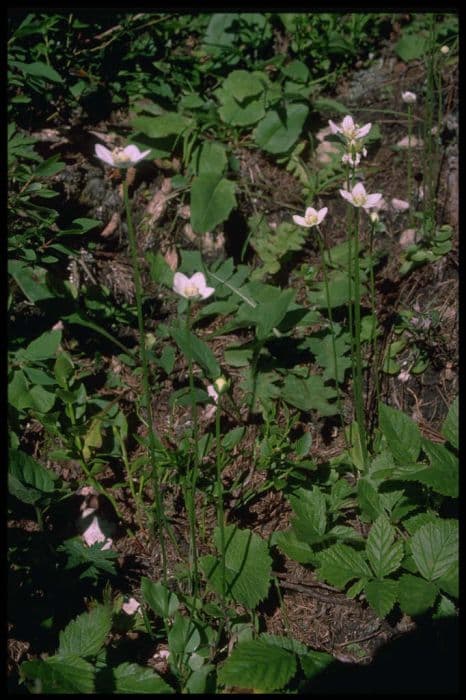
ABOUT
The plant known by its most common name, marsh grass-of-Parnassus, is an herbaceous perennial that bears a unique and delicate appearance. The focal point of the plant is its singular blossom per stem, which is comprised of five white petals. Each of these petals is adorned with distinctively green veins that create an intricate, almost lace-like pattern. The petals surround a cluster of stamens that are tipped with yellow anthers, adding a sprinkle of color to the flower's center. Surrounding the stamens are mimic stamens, which are actually sterile and serve the purpose of attracting pollinators with their nectar-rich design. The marsh grass-of-Parnassus has a basal rosette of leaves, which are broad and heart-shaped, often with a somewhat shiny surface. The leaves also feature prominently marked veins. The single flower stem emerges from the center of this leaf arrangement, pushing the striking white bloom well above the foliage for maximum visibility to pollinating insects. Bearing a somewhat glossy look, the overall appearance of the marsh grass-of-Parnassus is one that is both elegant and structurally simple, capturing the attention of both plant enthusiasts and the pollinators it seeks to attract.
About this plant
 Names
NamesFamily
Parnassiaceae
Synonyms
Marsh Grass of Parnassus, Bog Star, Grass of Parnassus, Northern Grass-of-Parnassus
Common names
Parnassia palustris var. neogaea, Saxifraga palustris.
 Toxicity
ToxicityTo humans
Marsh grass of Parnassus is generally not considered toxic to humans. There are no well-documented cases of toxicity or poisoning from ingestion of this plant. Consequently, no specific symptoms of poisoning are associated with this plant, and it's not considered to have serious consequences if ingested in typical quantities found in a natural setting.
To pets
Marsh grass of Parnassus is not known to be toxic to pets. There are no significant reports of this plant causing poisoning in domestic animals. Thus, ingestion of this plant is not generally associated with any specific symptoms or significant health consequences for pets.
 Characteristics
CharacteristicsLife cycle
Perennials
Foliage type
Deciduous
Color of leaves
Green
Flower color
White
Height
1 foot [30 cm]
Spread
1 foot [30 cm]
Plant type
Herb
Hardiness zones
3
Native area
Eurasia
Benefits
 General Benefits
General Benefits- Ecological Importance: Parnassia palustris, commonly known as grass-of-Parnassus, provides habitat and food for various insects and animals, contributing to biodiversity.
- Ornamental Value: With its attractive white flowers featuring intricate vein patterns, grass-of-Parnassus is a popular choice for gardens, particularly in wetland or bog garden settings.
- Soil Stabilization: The root system of grass-of-Parnassus can help stabilize soil in wet areas, preventing erosion and assisting in maintaining the integrity of marshy landscapes.
- Environmental Indicator: As a species that prefers specific conditions, grass-of-Parnassus can act as an indicator of the health of wetland ecosystems, signaling changes in environmental conditions.
- Education and Research: Grass-of-Parnassus can be used for educational purposes and research, particularly in studying wetland plant communities and their interrelationships.
- Conservation Value: Being part of native flora in various regions, the conservation of grass-of-Parnassus and its habitats contributes to the protection of natural heritage and biological diversity.
 Medical Properties
Medical PropertiesThis plant is not used for medical purposes.
 Air-purifying Qualities
Air-purifying QualitiesThis plant is not specifically known for air purifying qualities.
 Other Uses
Other Uses- Indicator species: Parnassia palustris, also known as Grass of Parnassus, can be used to indicate the health of wetland ecosystems as it thrives in environments with low nutrient pollution and stable moisture conditions.
- Educational tool: Due to its distinct floral morphology, Grass of Parnassus is often used in botanical education to teach students about plant structure and pollination mechanisms.
- Photography subject: The unique beauty of Grass of Parnassus makes it a popular subject for nature photographers and plant enthusiasts looking to capture the intricate details of its flowers.
- Cultural symbol: In some regions, Grass of Parnassus is a symbol of purity and untouched nature, often being associated with pristine environments and conservation areas.
- Garden aesthetics: The plant is sometimes used in bog garden designs or moist garden areas to create naturalistic landscapes that mimic its native wetland habitats.
- Artistic inspiration: Artists may use the delicate form and structure of Grass of Parnassus as a source of inspiration for various forms of art including paintings, illustrations, and sculptures.
- Baseline species for restoration: Grass of Parnassus can serve as a baseline species in habitat restoration projects aimed at re-establishing native wetland plants.
- Environmental awareness: Grass of Parnassus is sometimes featured in environmental campaigns to raise awareness about the importance of wetland conservation.
- Biomonitoring: It can be used in biomonitory studies to assess the impact of climate change on flowering times and the growth of wetland flora.
Interesting Facts
 Feng Shui
Feng ShuiMarsh grass of Parnassus is not used in Feng Shui practice.
 Zodiac Sign Compitability
Zodiac Sign CompitabilityMarsh grass of Parnassus is not used in astrology practice.
 Plant Symbolism
Plant Symbolism- Rarity and Preciousness: Parnassia palustris, commonly known as grass-of-Parnassus, is not a widespread flower, thus it symbolizes something rare and valued.
- Beauty and Purity: The white petals of the grass-of-Parnassus are often associated with purity and the clean, untainted beauty found in nature.
- Overcoming Challenges: This plant thrives in marshy, wet conditions, which can symbolize the ability to overcome difficult or less-than-ideal circumstances.
- Connection to Mythology: Named after Mount Parnassus in Greek mythology, this plant carries with it the legacy and reverence of the mythological seat of the Muses, representing inspiration and the arts.
 Water
WaterGrass-of-Parnassus, also known as Parnassia palustris, prefers consistently moist soil and should not be allowed to dry out. The ideal method of watering this plant is to use a gentle shower or drip system to avoid disturbing the soil or plant structure. In terms of frequency, during the growing season water the plant thoroughly once or twice a week, depending on the climate and weather conditions. The amount of water should be roughly equivalent to 1 gallon per week for an average-sized plant to ensure the soil stays evenly moist but not waterlogged.
 Light
LightGrass-of-Parnassus thrives in bright, indirect light with some direct morning sunlight. It's best to place the plant in a spot where it can receive filtered light throughout the day. Avoid intense direct afternoon sunlight, as it can scorch the leaves. The plant will grow best near a north or east-facing window or in a lightly shaded part of the garden.
 Temperature
TemperatureGrass-of-Parnassus prefers cooler temperatures, thriving in a range between 50 to 70 degrees Fahrenheit. The plant can tolerate temperatures down to 30 degrees Fahrenheit but should be protected from frost. Ideal conditions for this plant do not include extreme heat; it may struggle and require additional care if temperatures consistently rise above 75 degrees Fahrenheit.
 Pruning
PruningPruning Grass-of-Parnassus is primarily for maintaining plant shape and removing dead or damaged foliage. Prune the plant after flowering to tidy up the appearance, being careful not to remove more than a third of the plant at a time. Pruning can be done as needed throughout the growing season, but the best time for a more thorough pruning is in the late fall or early spring.
 Cleaning
CleaningAs needed
 Soil
SoilFor Grass of Parnassus, a soil mix rich in organic matter with good drainage is ideal; combine peat, loamy soil, and coarse sand. It prefers a slightly acidic to neutral pH of 5.5 to 7.
 Repotting
RepottingGrass of Parnassus does not need frequent repotting; do it every 2-3 years or when it outgrows its container.
 Humidity & Misting
Humidity & MistingGrass of Parnassus thrives best at moderate to high humidity levels, ideally between 60-80%.
 Suitable locations
Suitable locationsIndoor
Use well-drained soil, indirect sunlight, and maintain moderate humidity.
Outdoor
Plant in moist, well-drained soil; partial sun or light shade.
Hardiness zone
4-8 USDA
 Life cycle
Life cycleGrass-of-Parnassus, or Parnassia palustris, typically begins its life as a seed that germinates in spring in moist, alkaline soils. Once the seed germinates, it develops a rosette of basal leaves. Following vegetative growth, the plant sends up a flowering stalk in the summer, usually between July and September, which bears a solitary, white flower. After pollination, which is often aided by flies and bees attracted to the nectar and false stamens of the flower, the plant produces a capsule fruit containing numerous seeds. The fruit ripens and the seeds are dispersed in late summer or autumn, completing the reproductive cycle. During the winter, the plant dies back to the ground, but the roots remain alive to sprout again the following spring.
 Propogation
PropogationPropogation time
Spring to early summer
Parnassia palustris, commonly known as Grass-of-Parnassus, is best propagated by seed. Timing is critical; seeds should be sown as soon as they are ripe in late summer or autumn in a cold frame. To propagate, collect the seeds from the capsules after they have dried on the plant. Then sow them superficially in a well-draining soil mix, ensuring not to bury the seeds too deeply, typically no more than 1/8 inch (approximately 3 millimeters). Maintain consistent moisture and provide natural cold stratification by leaving the cold frame outdoors through the winter months. With the arrival of spring, watch for seedling emergence and transplant them to individual pots when they are large enough to handle, before planting out into their final position in the garden once the risk of frost has passed.
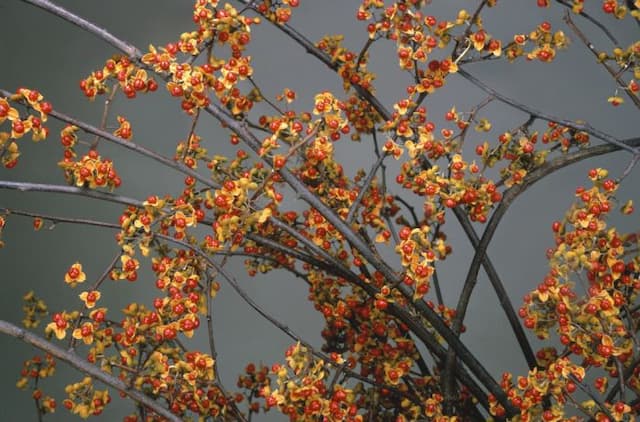
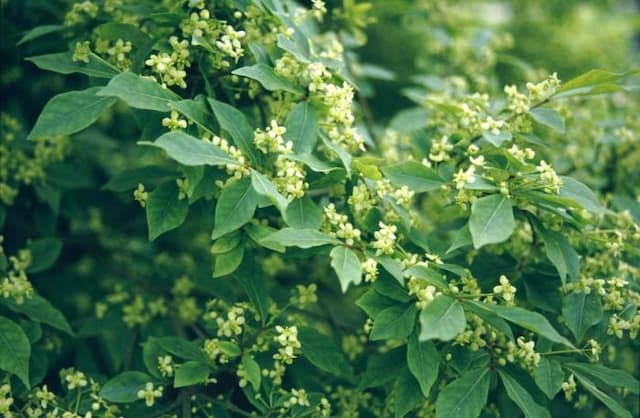
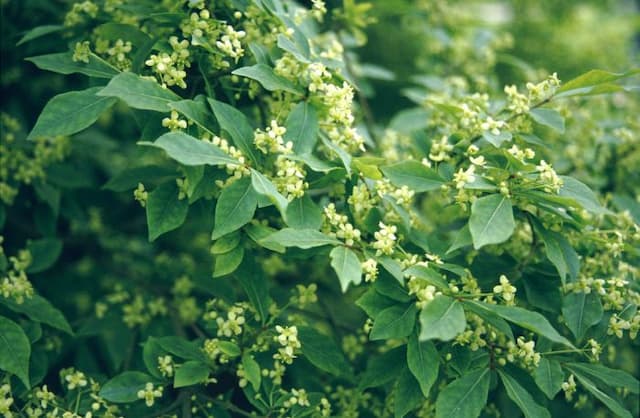
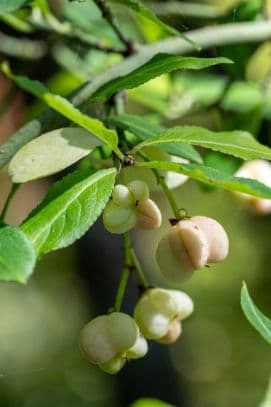
![Spindle [Blondy]](/_next/image?url=https%3A%2F%2Fplants-admin.emdemapps.com%2Fimages%2Fplants%2F%2Fimages%2F604b642f54add.png&w=640&q=75)


